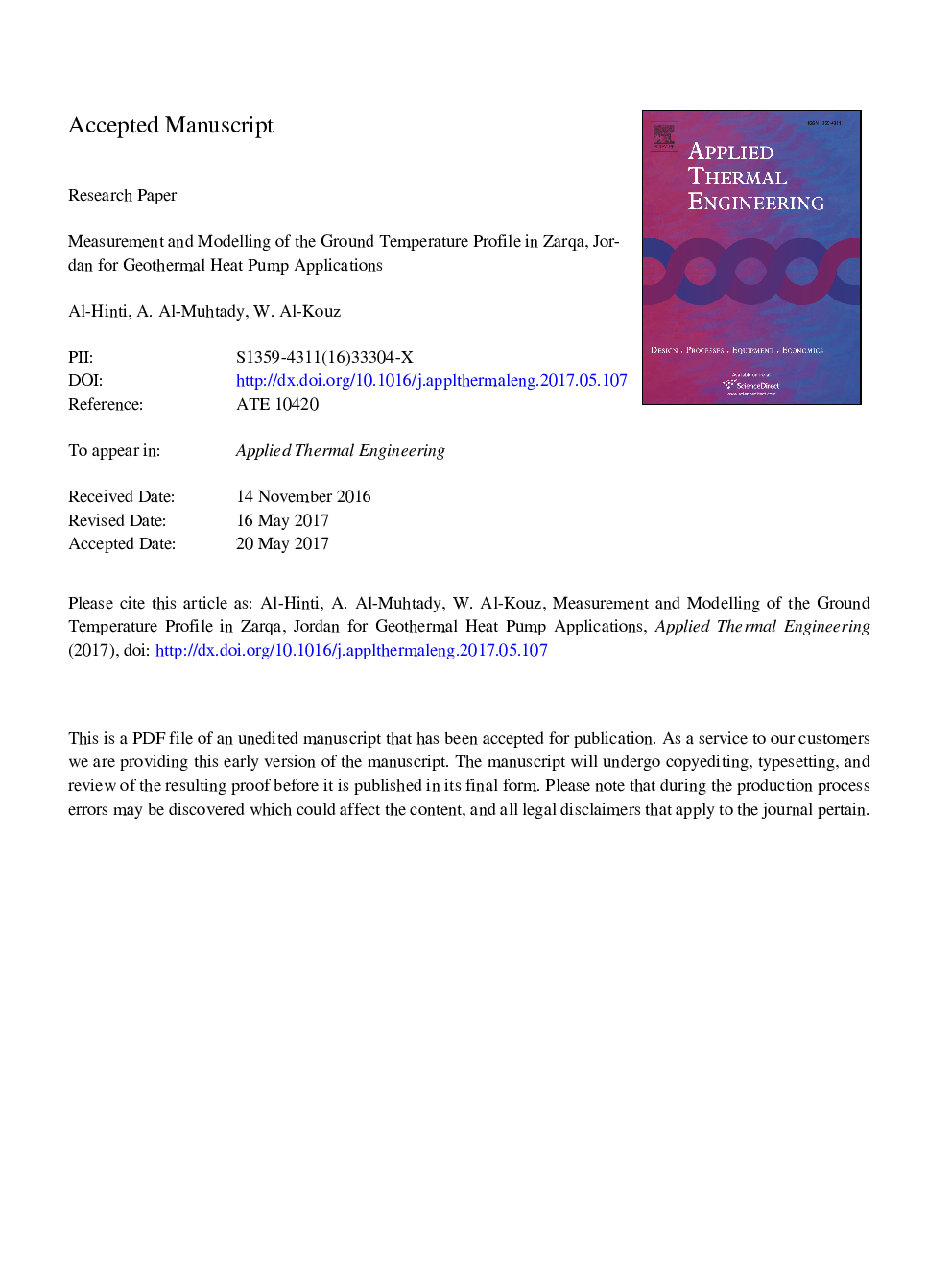| Article ID | Journal | Published Year | Pages | File Type |
|---|---|---|---|---|
| 4990497 | Applied Thermal Engineering | 2017 | 22 Pages |
Abstract
The use of Geothermal Heat Pumps (GHP) for cooling and heating applications is still to be assessed in Jordan. As a first step in the assessment of the technical and economic feasibility of GHP option, it is necessary to have an accurate understanding of the underground temperature distribution. Such distribution is key to the evaluation of the type, size, design, and depth of the ground heat exchanger of the proposed heat pump systems. For this purpose, this study was conducted to experimentally establish the year-round underground temperature distribution profile near the city of Zarqa in Jordan. The daily and seasonal ground temperature profiles are presented for various depths. It is demonstrated that despite the cyclic nature of the daily and seasonal variations of the ambient and ground surface temperatures, the underground temperature variations diminish with depth and stabilize throughout the year at around 21 °C starting from a depth of 5 m below the surface. A simplified semi-empirical model was also developed to predict the temperature profile as function of time, depth, the mean ground surface temperature, and soil properties with the help of the measured data.
Related Topics
Physical Sciences and Engineering
Chemical Engineering
Fluid Flow and Transfer Processes
Authors
I. Al-Hinti, A. Al-Muhtady, W. Al-Kouz,
